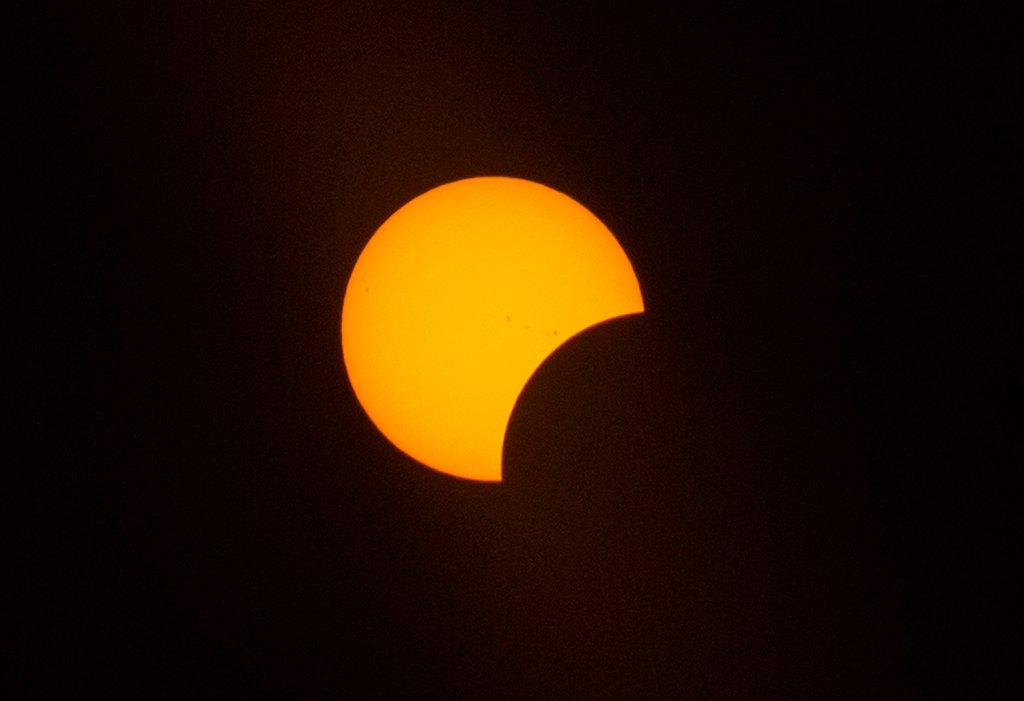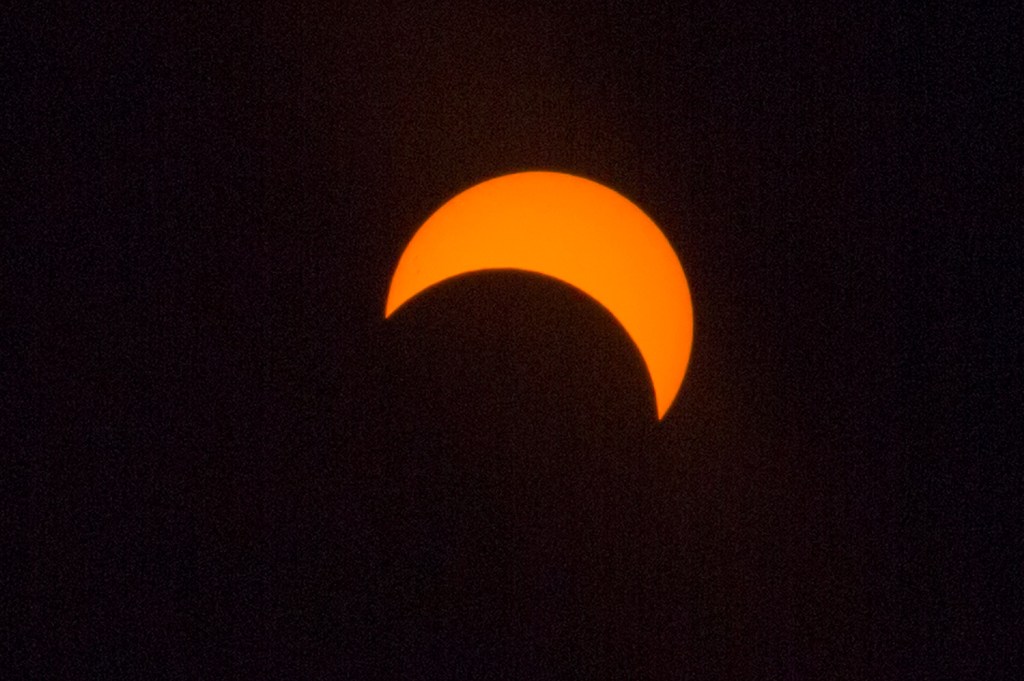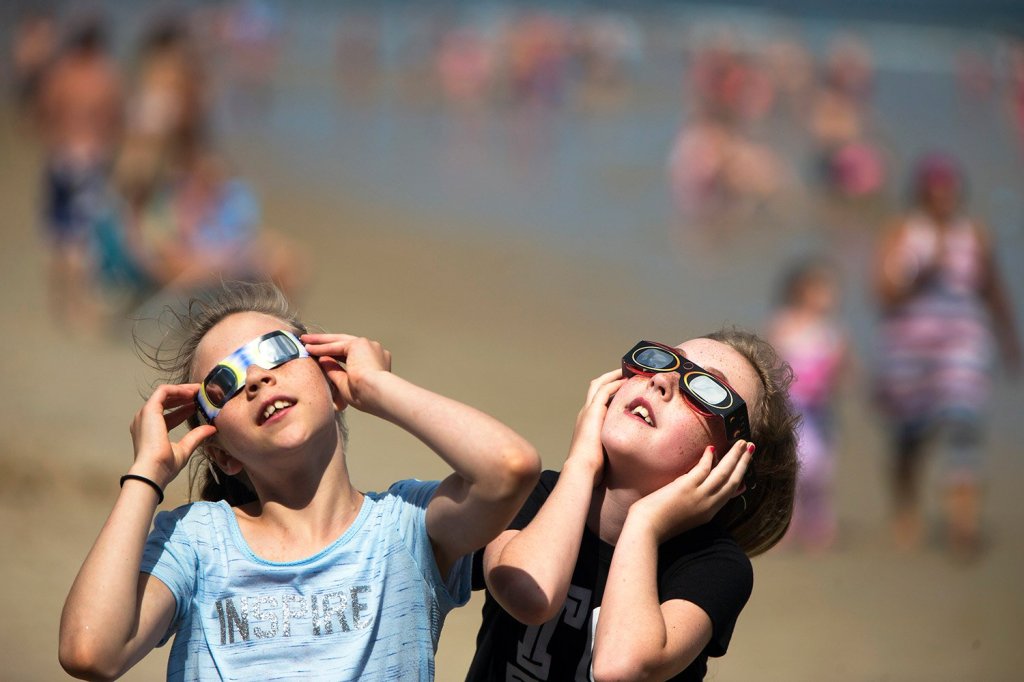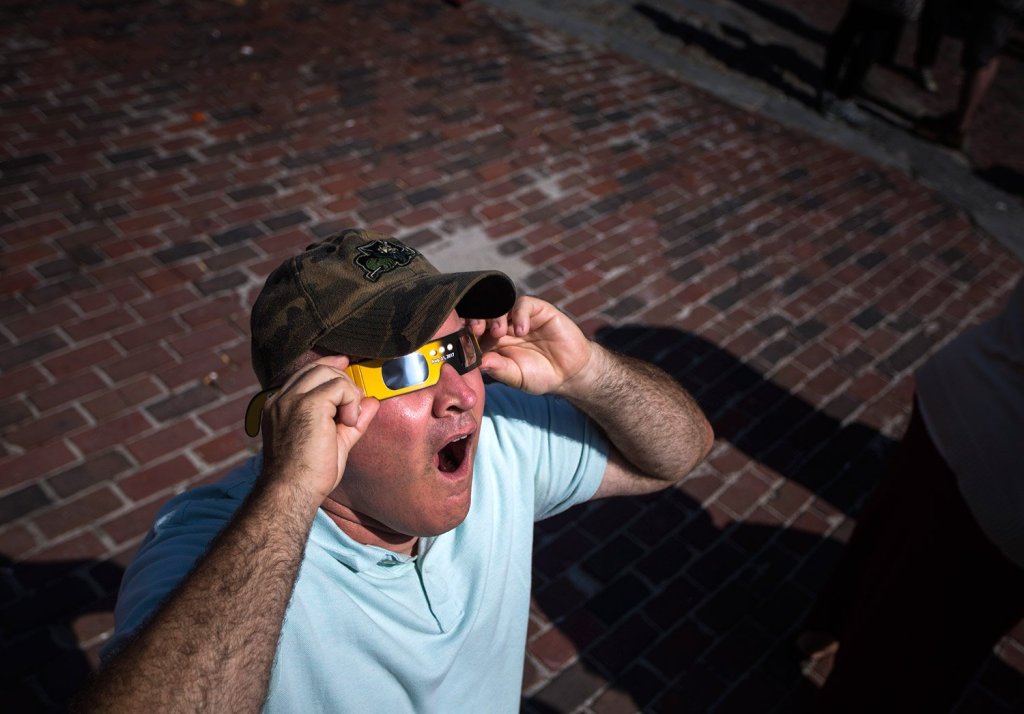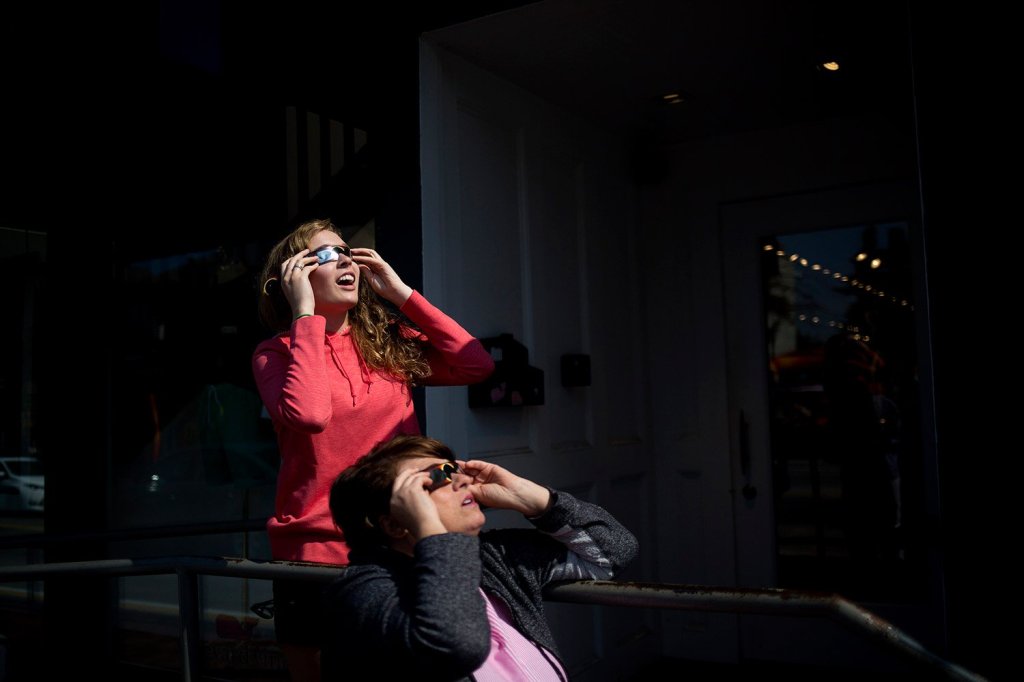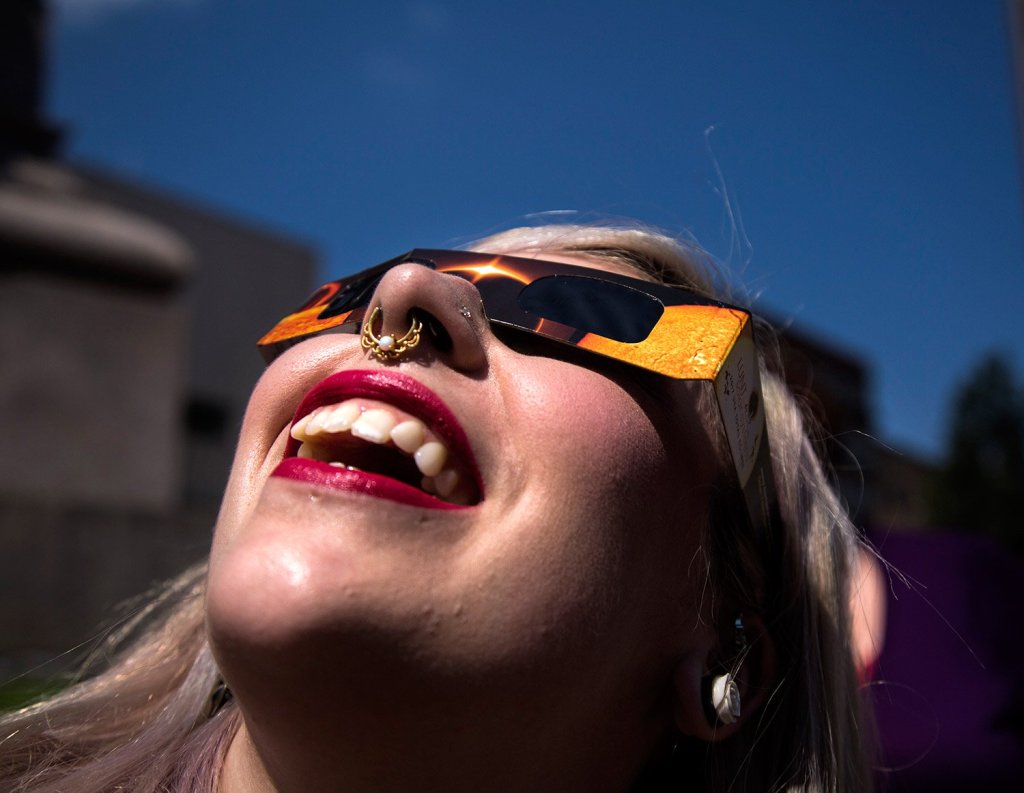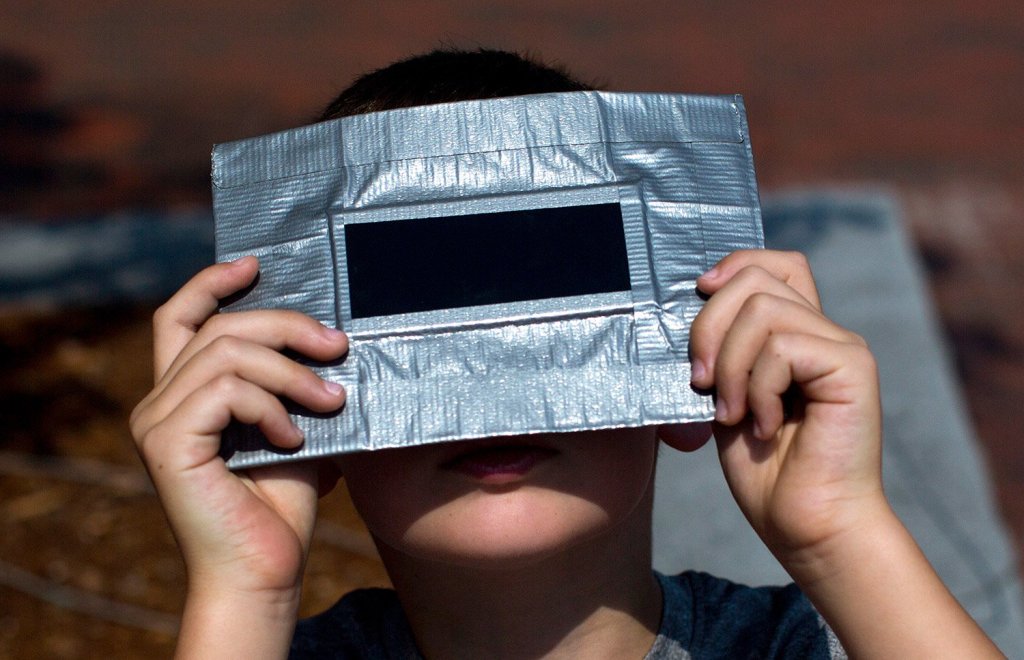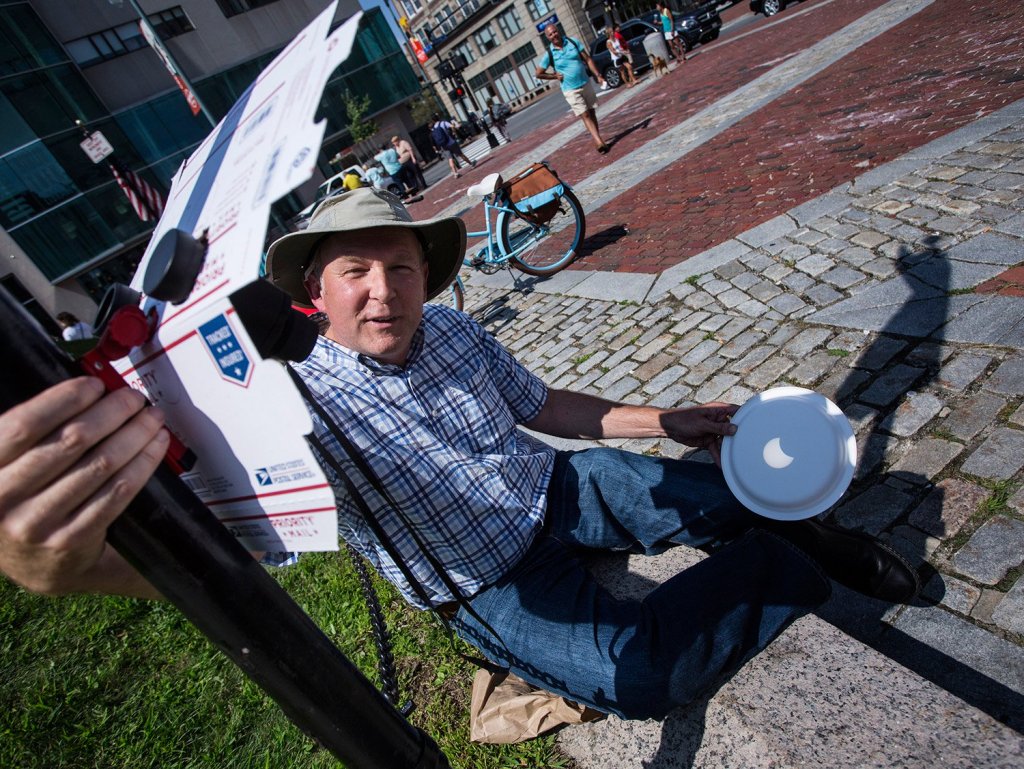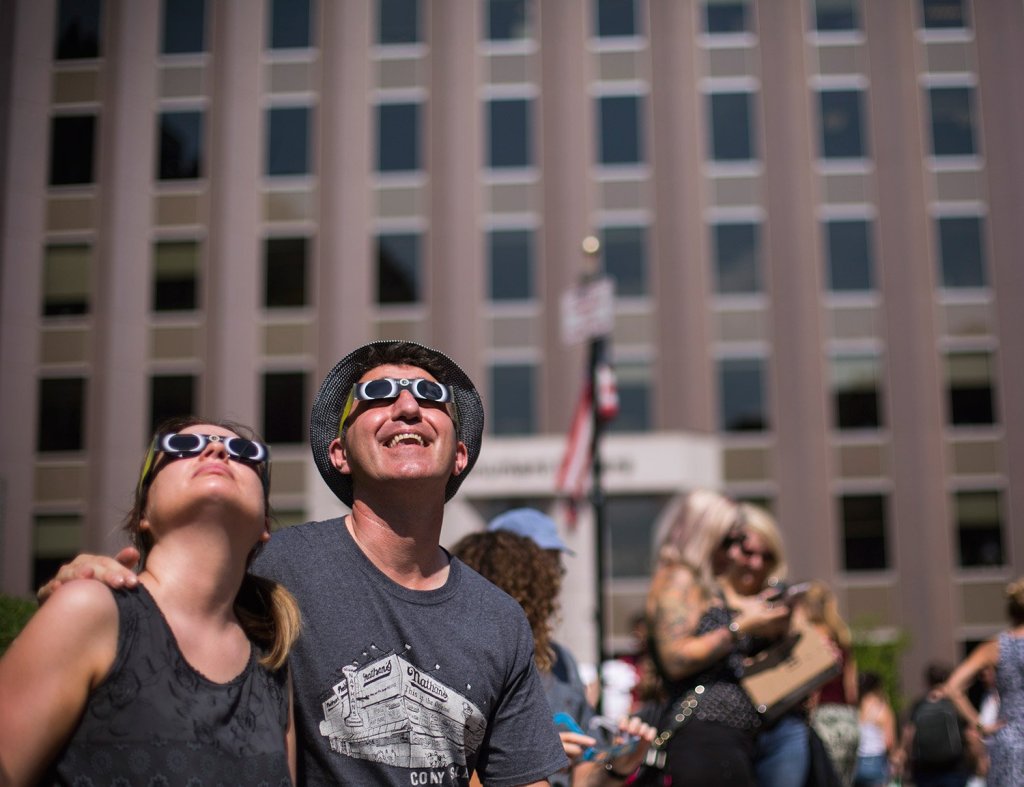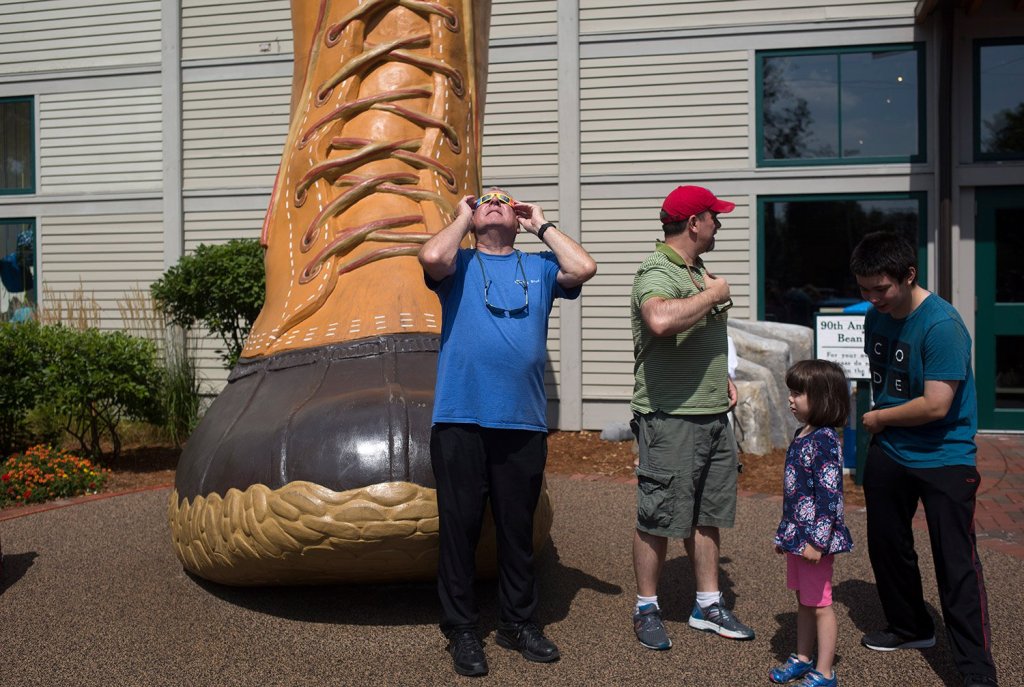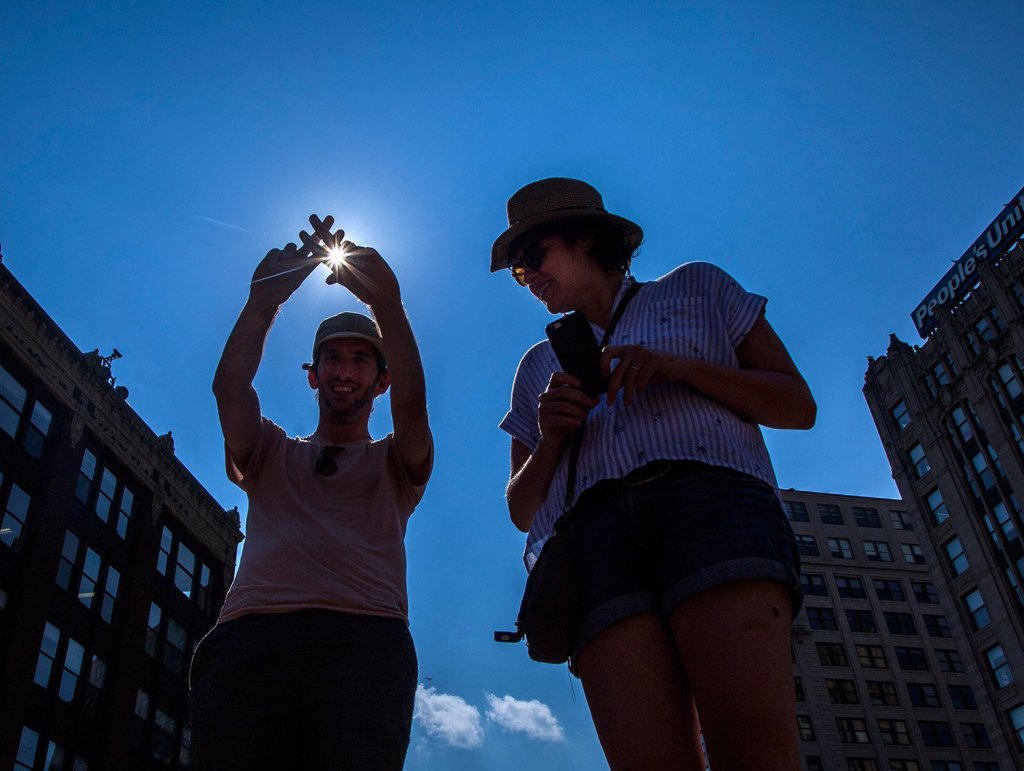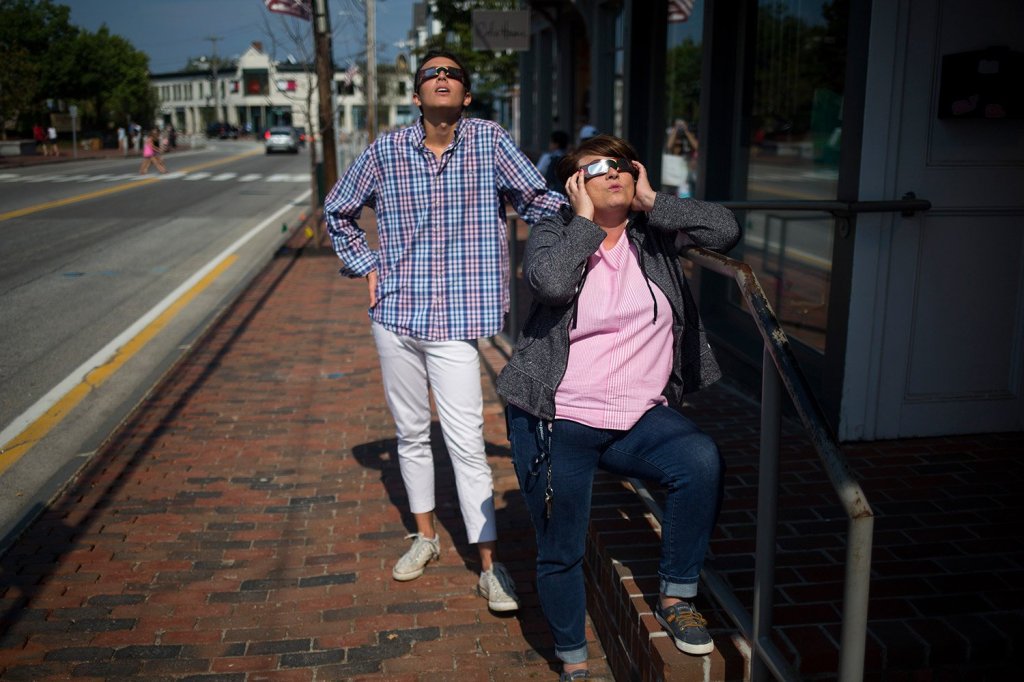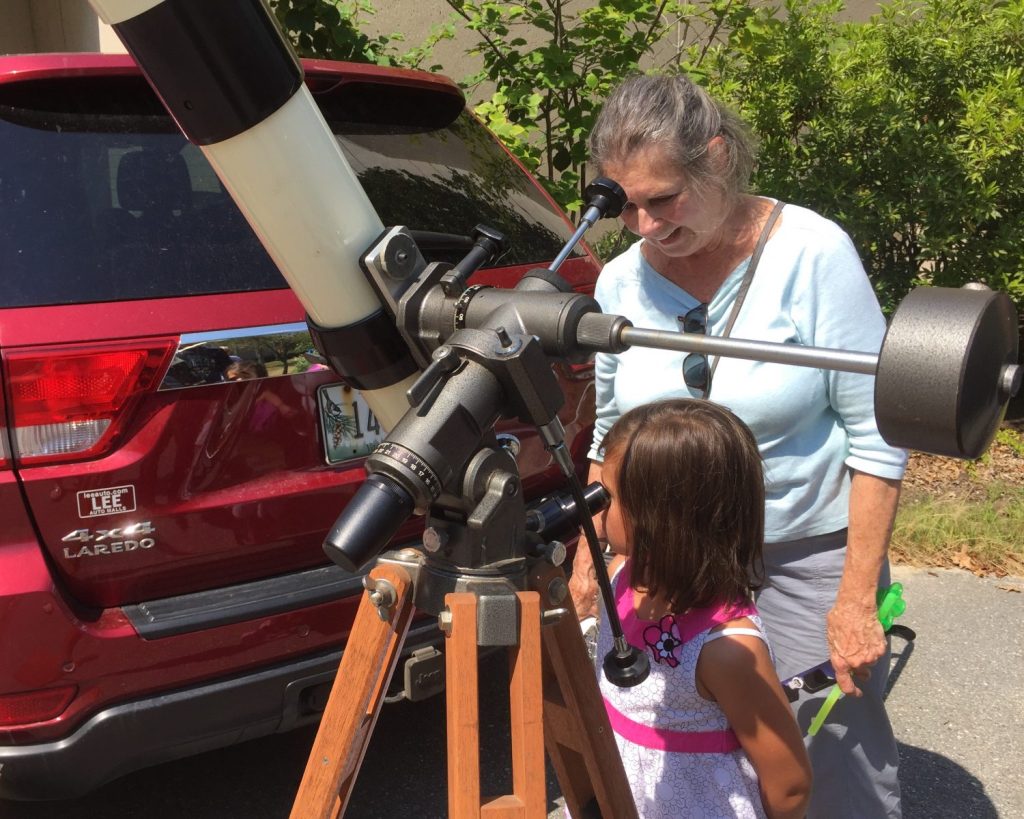Thousands of Mainers looked skyward Monday afternoon to catch a glimpse of the Great American Eclipse as it passed through the state around 2:45 p.m.
From Portland to Freeport to Augusta, hundreds joined community gatherings to see what was a partial eclipse in Maine but a total eclipse along the relatively narrow “path of totality” from Oregon to South Carolina.
A few hundred eclipse watchers started gathering at 1 p.m. at the Southworth Planetarium at the University of Southern Maine, eager to see the moon pass between the sun and Earth. Some waited outside in the August heat and gazed at the shrinking crescent through special eclipse glasses designed to prevent eye injury. Others waited in line to use a high-powered telescope equipped with a light filter. Still others had reserved seats inside the planetarium, where they watched a live feed of total eclipse coverage as it crossed the country.
Sue Ward, a retired Portland school administrator, was one of the early arrivals inside the planetarium.
“There’s just something about being here and being with people who are enjoying this event,” said Ward, 65, whose love for astronomy goes back decades. “I had a telescope as a kid growing up in northern Maine. Without all the city lights, you could see all the stars and constellations in Presque Isle.”
Barbara Coleman and her 5-year-old granddaughter, Sophia Coleman, spied the advancing eclipse through the telescope outside the planetarium, then went indoors to watch a live feed of national eclipse coverage in an overflow lecture hall.
“She’s so excited,” Coleman said of her granddaughter. “She knows all about (the eclipse) and wanted to come here.”
The last solar eclipse with a totality path extending from the Pacific to the Atlantic occurred in 1918, said Edward Gleason, planetarium manager. Astronomy fans dubbed Monday’s event the Great American Eclipse because it was the first total solar eclipse with a totality path that was visible only on U.S. soil since 1257, Gleason said.
“That was before this Republic was established,” Gleason said. “We’ve seen a few partial solar eclipses here in Maine over the last 15 years, but none of them generated the interest of this one because it was such a rare event.”
Hundreds gathered at L.L. Bean’s headquarters in Freeport to view the eclipse through six large telescopes that were set up in front of the company’s giant “Bean Boot” statue. A flat-screen TV also was set up outside to live-stream NASA footage of the eclipse. Others watched the event using paper plates with pinholes poked into them or through disposable, solar-filtered glasses.
Michael Crowley of Hebron brought his grandchildren to the L.L. Bean viewing.
“We came here specifically to get them into the whole eclipse thing,” Crowley said as he waited in line for a telescope.
About 250 people gathered at the Lithgow Public Library in Augusta, one of many libraries across the state that hosted eclipse-related events. Billy Leger was there with his 8-year-old daughter, Abby.

Tim Christy shot these images of the eclipse in Buxton using an 8-inch Meade Telescope with a Canon Rebel camera.
“I wanted to experience it with her,” Leger said, looking around. “It’s an interesting gathering of people.”
Many Mainers simply stepped outside their homes and offices to watch the event with special “Eclipse Shades” or homemade contraptions that afforded safe viewing.
As the moon covered more of the sun, a diverse crowd grew in Portland’s Monument Square. Many shared their glasses and viewing equipment. Someone lent glasses to 7-year-old Emmett Brady.
“That was cool!” Emmett exclaimed after seeing the advancing eclipse.
His father, Aaron Brady, 45, was struck by the communal atmosphere of the crowd.
“It’s just great to see people get together,” he said. “And not to protest anything.”
Some brought makeshift pinhole cameras made out of cardboard boxes and aluminum foil that got mixed reviews. But many in Monument Square agreed that Nate Morse, a 56-year-old amateur astronomer from Yarmouth, had the best rig.
Morse clamped a pair of binoculars on a flag pole and focused the sun on a white paper plate. He held the plate with his hand, as people gathered around to watch the eclipse, which was the size of a silver dollar.
“It’s a labor of love,” Morse said.
The crowd in the square let out a cheer at 2:45 p.m., when the eclipse peaked at 58.8 percent coverage. A crescent of the sun still shone through and it didn’t seem noticeably darker outdoors.
In Portland, the fullest eclipse happened at exactly 2:45:53 p.m., according to the U.S. Naval Observatory. Some Mainers expected to see a total eclipse and were slightly disappointed.
“I’m still glad I came to see it,” said Azari Minter, 20, of Portland, who was in the crowd at the planetarium. “It was good to get a better closeup view through the telescope.”
If you missed Monday’s show, all is not lost.
A total solar eclipse will be visible in western and northern Maine on April 8, 2024, Gleason said. The last time a total eclipse was visible anywhere in Maine was 1963, he said.
“Today was a nice dress rehearsal for 2024,” Gleason said. “We’ll begin planning for that one in 2020.”
But you don’t want to miss that one. The next time a total eclipse will be visible in Maine will be 2079 in the southern part of the state.
Staff writers J. Craig Anderson, Randy Billings and Jessica Lowell contributed to this report.
Send questions/comments to the editors.


